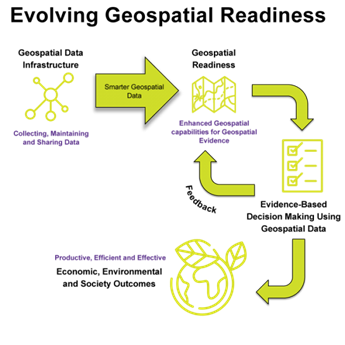Local to National Monitoring Using Data
In my last blog article, I wrote about improving the standardisation of local data for regional, national and international access. Such improvements require both top-down and bottom-up defensive and offensive approaches to specifying data formats and data standards.
COVID-19
COVID-19 has highlighted the need to make health and social care data accessible to the wider public and private sector and to research projects at local, regional, national and international scales. There is a need to engage with local and regional delivery teams to co-produce actionable insights from data, informing policy making and informing effective pandemic response at national, regional and local levels. To achieve this requires a scale of partnership and trust not seen before working across organisations.
Defining Partnerships and Trust
Specific organisations including local authorities, Environment Agency, British Geological Survey, Scottish Government, Welsh Government, Ministry of Housing, Communities and Local Government and Department of Transport are instrumental for defining partnerships and trust across and between local, regional and national scales.
Partnerships are needed to improve data standardisation approaches, benefiting evidence-based decision making for the public sector. For this blog article I will focus on applying standardised data approaches for local, regional and national monitoring.
The Growth of Monitoring
One of the ways the public sector is increasing partnership, trust and effectiveness is by concentrating on monitoring. This is because monitoring is a pivotal competence that has positive effects both up and downstream: it improves public sector policies, strategies and plans as well as improving performance and optimising the impact of existing policies, strategies and plans. There are hundreds if not thousands of monitoring use cases related to our economy, environment and society. COVID-19 has shown the significant value and need for robust continual monitoring using health and social care data. Monitoring is a systematic and long-term process for the public sector that needs FAIR data and information. Monitoring enables organisations at local, regional and national levels to assess the effectiveness of policies, strategies and plans. Monitoring enables organisations to understand whether strategic changes need to be made and act accordingly.
In a world where there are increasing demands for access to harmonised data for monitoring purposes, how can we bridge the gap between data typically captured at a local scale and what is required for monitoring purposes at local, regional, national and possibly international scales?
Bridging the Gap Between Local Data and Local, Regional and National Monitoring
From the work that 1Spatial undertakes with public sector organisations, a key component for bridging the gap between local data and local, regional and national monitoring is designing, operationalising and supporting agreed data formats and data standards. Using agreed data formats and data standards makes using data easier for monitoring purposes. Data formats and data standards provide data integrity, accuracy and consistency, clarify ambiguous meanings, minimise redundant data, and document business rules. Data becomes usable to more than just the project or person that created the data and it can be harmonised and made accessible.
Previously I have talked about evolving geospatial readiness to provide evidence-based decision making using geospatial data. The standardisation of data is critical to the evolution of this readiness via data infrastructures.

In a world of increasing digitalisation, how can you evolve your geospatial readiness to bridge the gap?
1Spatial provides solutions that bridge the gap between local data and local, regional and national monitoring. 1Spatial’s approach follows learning by doing, overcoming by sharing and succeeding together through data Collaboration, data Automation, data Transformation and data Visualisation principles.
- Data Collaboration – working with employees and stakeholders internally and externally to share data management responsibilities at local, regional and national scales.
- Data Automation – operationalising automated workflows to manage and share data at local, regional and national scales.
- Data Transformation – making digital data fit for purpose by transferring data between data source(s) and target interface(s) using defined data formats and data standards.
- Data Visualisation – making digital data accessible for people and decision makers to use for monitoring purposes.
1Spatial bridges the gap, supporting the development of partnerships at local, regional and national scales by working with people who work with data. 1Spatial apply processes and technology for example, 1Data Gateway, 1Integrate, FME and Geocortex to achieve standardised data, benefiting all those that depend on data for continual monitoring purposes.
Find out more
If you would like to find out more about how 1Spatial is working with public organisations to unlock the value of location by improving location data using standardisation to enable local to national monitoring please contact us.
Author Matthew White

